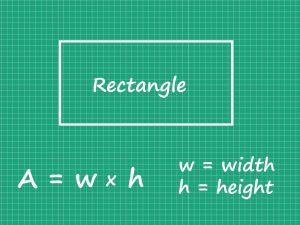Key Concepts
- Identify Inverse Variation.
- Use an Inverse Variation Model.
- Graph the Reciprocal Function.
- Graph the Translations for the Reciprocal Function.
Inverse Variation
Identify Inverse Variation
How do you determine if a relationship represents an inverse variation?
- Does the table of values represent an inverse variation?

An inverse variation is a relation between two variables such that one variable increases, the other decreases proportionally. For the table to represent an inverse variation, the product of x and y must be constant. Find the product, xy, for each column in the table.

- Does the table of values represent an inverse variation?

Find the product.

Concept
When a relation between x and y is an inverse variation, we say that x varies inversely as y. Inverse variation is modeled by the equation y = k/x or with an equivalent form x = k/y or xy = k, when k ≠ 0. The variable k represents the constant of variation, the number that relates the two variables in an inverse variation.
In this table, the constant of variation is 24.

Use an Inverse Variation Model
On a guitar, the string length, s, varies inversely with the frequency, f, of its vibrations.

The frequency of a 26-inch E-string is 329.63 cycles per second. What is the frequency when the string length is 13 inches?
Solution:
s = k/f————————–Write the equation for an inverse variation.
26 = k/329.63—————-Substitute 26 and 329.63 for s and f.
8570.38 = k ——————-Multiply by 329.63 to solve for k.
After solving for k, write an equation for an inverse variation.
s = 8570.38/f—————–Substitute 8570.38 for k in the equation.
13 = 8570.38/f—————Substitute 13 for s in the equation.
f = 659.26 ———————Solve for f.
So, the frequency of the 13-inch string is 659.26 cycles per second.
Reciprocal Function
Graph the Reciprocal Function
How do you graph the reciprocal function, y = 1/x?
The reciprocal function maps every non-zero real number to its reciprocal.
Step 1: Consider the domain and range of the function.

Step 2: Graph the function.


Step 3:
Observe the graph of y = 1/x as it approaches positive infinity and negative infinity.

An asymptote is a line that a graph approaches. Asymptotes guide the end behaviour of a function.
As x approaches infinity, f(x) approaches 0. The same is true as x-values approach negative infinity, so the line y = 0 is a horizontal asymptote.
Step 4:
Observe the graph of y = 1/x as x approaches 0 for positive and negative x-values.

For positive values of x, as x approaches 0, f(x) approaches positive infinity.

For negative values of x, as x approaches 0, f(x) approaches negative infinity. The domain of the function excludes 0, so the graph will never touch the line x = 0. The line x = 0 is a vertical asymptote.
Graph the Translations of the Reciprocal Function
Graph g(x) = (1/x – 3)+ 2. What are the equations of the asymptotes? What are the domain and the range?
Start with the graph of the parent function,
f(x) = 1/x
.

Recall that adding h to x in the definition of f translates the graph of f horizontally. Adding k to f(x) translates the graph of f vertically.
The function (1/x – 3) + 2 is a transformation of the parent function f that shifts the graph of f horizontally by h units and then shifts the graph of f vertically by k units.
The graph of g(x) = (1/x – 3) + 2 is a translation of the graph of the parent function 3 units right and 2 units up.

The line x = 3 is a vertical asymptote. The line y = 2 is a horizontal asymptote.
The domain is {x ∣ x ≠ 3}.
The range is {y ∣ y ≠ 2}.
Questions
Question 1
Determine if this table of values represents an inverse variation.

Solution:

Since the product xy is constant, this table of values represents an inverse variation.
Question 2
The amount of time it takes for an ice cube to melt varies inversely to the air temperature, degrees. At 20° Celsius, the ice will melt in 20 minutes. How long will it take the ice to melt if the temperature is 30° Celsius?
Solution:
Let t be the time it takes for an ice cube to melt and T be the air temperature in degrees.
t = k/T (Inverse Variation)
For T = 20 degrees, t = 20 minutes.
20 = k/20… k = 400
Equation: t = 400/T
If T = 30 degrees, t = 400/30 = 13.33 minutes.
Question 3
Graph g(x) = (1/x+2) – 4. What are the equations of the asymptotes? What are the domain and the range?
Solution:
Start with the graph of the parent function, g(x) = 1/x
.

g(x) = (1/x+2) – 4
Adding 2 to x shifts the graph horizontally to the left by 2 units and subtracting 4 from the output shifts the graph down by 4 units.
Below is the graph of the function: g(x) = (1/x+2) – 4

As we can see in the graph, vertical asymptote is x = -2 and horizontal asymptote is y = -4.
The domain is {x ∣ x ≠ -2}.
The range is {y ∣ y ≠ -4}.
Key Concepts Covered

Exercise
Graph the following functions. What are the asymptotes? What are the domain and the range?
- f(x) = 1/x
- f(x) = (1/(x+5)) – 4
- f(x) = (1/(x-1)) + 2
- f(x) = (1/(x-6)) – 3
- f(x) = (1/(x+1)) – 1
- f(x) = (1/(x+10)) – 9
- f(x) = (1/(x-5.5)) + 6
- f(x) = (1/(x+4)) – 6
- f(x) = (1/(x+3.2)) – 3.4
- f(x) = (1/(x-9)) – 9
Related topics
Addition and Multiplication Using Counters & Bar-Diagrams
Introduction: We can find the solution to the word problem by solving it. Here, in this topic, we can use 3 methods to find the solution. 1. Add using counters 2. Use factors to get the product 3. Write equations to find the unknown. Addition Equation: 8+8+8 =? Multiplication equation: 3×8=? Example 1: Andrew has […]
Read More >>Dilation: Definitions, Characteristics, and Similarities
Understanding Dilation A dilation is a transformation that produces an image that is of the same shape and different sizes. Dilation that creates a larger image is called enlargement. Describing Dilation Dilation of Scale Factor 2 The following figure undergoes a dilation with a scale factor of 2 giving an image A’ (2, 4), B’ […]
Read More >>How to Write and Interpret Numerical Expressions?
Write numerical expressions What is the Meaning of Numerical Expression? A numerical expression is a combination of numbers and integers using basic operations such as addition, subtraction, multiplication, or division. The word PEMDAS stands for: P → Parentheses E → Exponents M → Multiplication D → Division A → Addition S → Subtraction Some examples […]
Read More >>System of Linear Inequalities and Equations
Introduction: Systems of Linear Inequalities: A system of linear inequalities is a set of two or more linear inequalities in the same variables. The following example illustrates this, y < x + 2…………..Inequality 1 y ≥ 2x − 1…………Inequality 2 Solution of a System of Linear Inequalities: A solution of a system of linear inequalities […]
Read More >>Other topics











Comments: